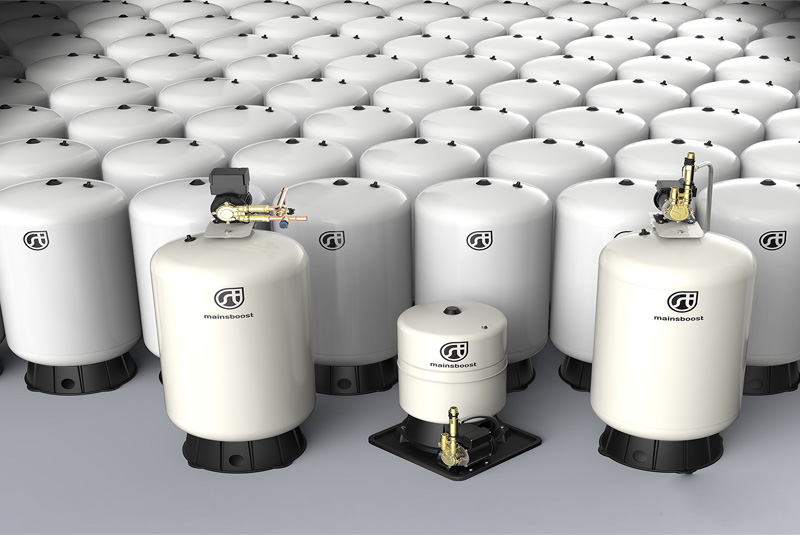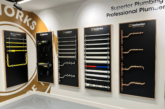
With the majority of loft conversions now incorporating additional bathroom facilities, extra strain is being placed on residential water systems, affecting both pressure and flow. Grant Ellis, Commercial Director at Stuart Turner, provides an insight into how mains boost pumps are an efficient solution in ensuring consistent flow rates and highlights the cross-selling opportunities offered to merchants.
According to the 2018 Hiscox Renovations and Extensions Report, the number of homeowners choosing to improve their homes rather than move has increased by 12% over the last five years, representing more than four million UK households. In addition, the number of planning applications for loft conversions has increased by 114% since 2008.
When undergoing a loft conversion, trade professionals need to consider how additional water outlets will affect the efficiency of the existing water system. This is particularly important when switching from a vented to an unvented system. And with merchants often looked to for the latest industry innovations as well as expert guidance on product suitability, they have a key role in informing installers of how best to achieve the optimal output for projects in which multiple outlets are to be fitted.
Vented or unvented systems?
There are two types of water systems found within a residential property — vented and unvented. Common in older properties, vented — or gravity-fed — systems are supplied by a large cold water tank which is kept in the loft space with the natural pull of gravity carrying the water down to the immersion heater or central heating boiler. However, the main drawback of the system is that the pressure and flow rate is dictated by the height of the water tank in comparison to the placement of the water outlets, allowing for inconsistent flow rates from outlet to outlet.
More commonplace in newer properties, or those without loft space, unvented systems rely on the mains water supply to directly feed the combi boiler or pressurised hot water cylinder. This water is then directly heated by the boiler and circulated around the home — removing the need for a water storage tank in the attic.
Boosting mains water pressure
With loft conversions, it is likely that the traditional cold water tank and conventional boiler have been replaced by a combi boiler or pressurised system to create extra living space. Whilst these modern heating and hot water systems are smaller and more energy efficient, they are entirely reliant on the incoming mains water pressure to work efficiently.
The Water Services Regulation Authority (Ofwat) stipulates that water companies must maintain a minimum pressure in the supply pipe of 0.7 bar at ground level. However, despite this minimum prescribed level, the water pressure will not necessarily remain constant, with water flow inconsistent when multiple outlets are in use at the same time — particularly at busy times of the day such as mornings or during hot weather.
This is because 0.7 bar of pressure is required to lift water by around 7 metres and so any outlets feeding from the mains water supply will negatively affect the flow rate, leaving it extremely low or even non-existent on the second or third floors of a property.
Mainsboost water performance systems
Designed to stabilise water pressure and increase flow to combination boilers and unvented systems, mainsboost water performance systems provide a simple-to-install, cost effective solution to low or intermittent mains water supply.
Mainsboost water performance systems are installed directly onto the incoming water supply and subsequently fill with water due to the existing mains pressure. This additional water supply then stabilises the pressure and increases the flow rate — allowing multiple outlets to be used simultaneously within a property, including unvented boilers.
One such example is the WRAS-approved Mainsboost from Stuart Turner. Suitbale for a property that has good water pressure (above 2.0 Bar static) but suffers from poor flow rates, its patented technology captures water ready to use at pressure in a sealed hygienic butyl diaphragm. Surrounded by positive pre-charged air pressure, the unit reaches a state of equilibrium, meaning the water charge and pre-charge pressure are perfectly in balance. When a tap is opened or a shower is in operation, the water is released under pressure to meet the demand, maintaining the dynamic pressure even if multiple outlets are in use simultaneously.
Where space is limited, the Mainsboost Flomate offers a simple solution to the problem of low or intermittent mains water pressure. Designed to be connected directly to the incoming mains, the Flomate can produce an output flow rate of up to 30 litres/minute and 3.2 bar pressure whilst being installed discretely within a standard kitchen cupboard — ensuring discreet operation and delivering superior performance on demand.
As the majority of loft conversions will now include the addition of an extra bathroom, understanding the effect an increased number of outlets can have on the water pressure system of a home is essential. Educating customers on the benefits of mains boost water performance systems provides merchants with an excellent opportunity to cross sell. By asking the question of any professional undertaking a loft conversion if the water pressure has been considered, you are not only improving your bottom line but helping your customer deliver the best possible results.









